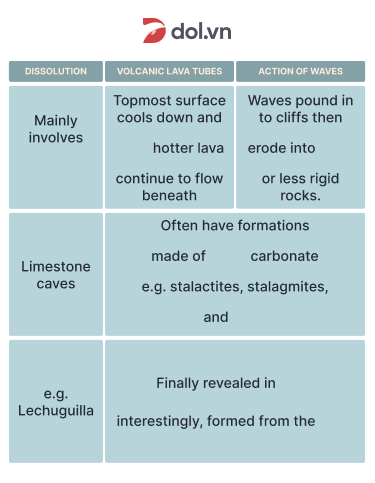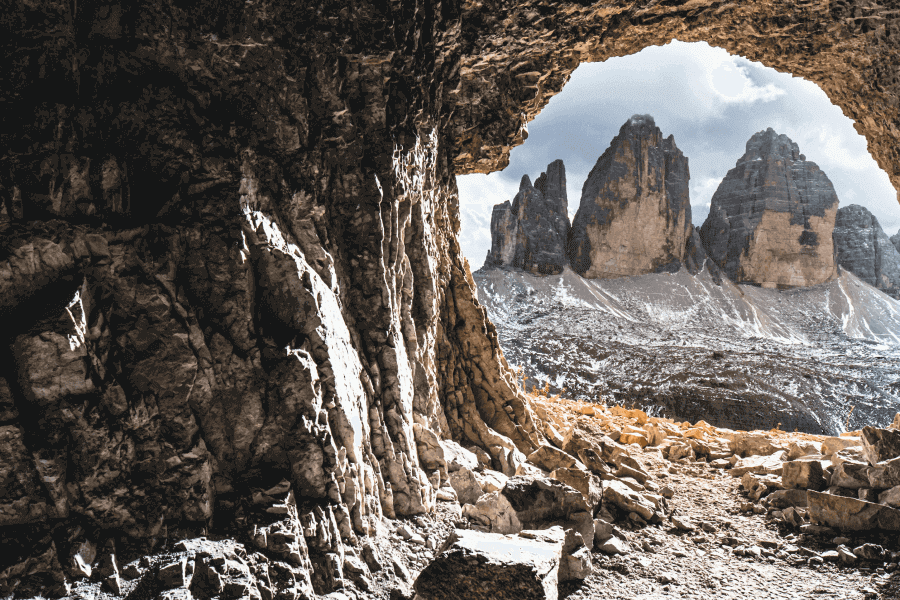If there is one natural feature which has long fascinated man, it is caves - those natural underground spaces into which people can enter.
No known cave in the world can exist without it being extensively explored, whether it be in remote areas, such as the Clearwater Cave in Borneo, or immensely long and difficult, such as Mammoth Cave in America, or perhaps the most challenging: those caves below the water table, full with water -- in which ease the exploration is known as cave diving.
Whatever the ease, if the caves are known, as complex and difficult as they usually are, they will be explored. The formal name for the study of caves is speleology — and involves many disciplines, such as chemistry, geology, biology, and cartography, or the science of making accurate maps, since the largest caves can be hundreds of kilometers long and highly complicated.
If the exploration is just for fun, the activity is known as caving, but with the difficulties and dangers involved, the average caver is often involved with one of these speleological sciences.
As for the number of caves in the world, research suggests that only a fraction have been found and documented, mostly in the areas in which caving has long been a popular activity, such as in America, France, or Australia.
China, for example, has huge areas of limestone bedrock—prime material for cave formation—and logically must contain among the largest number of caves in the world, yet only few are documented due to the lack of interest in caving there.Thus, as exploration continues, new caves will be discovered, and it is likely that the numbers could radically change in the future.
With caves being such mysterious and intriguing places, the obvious question concerns how they form. The most common cause is the effect of slightly acidic water in a process called 'dissolution'. Here, water seeps into the ground, and down through rock masses.
If this rock is soluble, the water dissolves some of it, and over time, the passage expands to become a cave, or cave system. The largest and most common of these involves limestone, although other materials are possible, including gypsum, marble, and even salt.
Now, if the cave is formed at the same lime as the rock, it is called a primary cave, and the most common of these are lava tubes. When lava from volcanoes flows downhill, the topmost surface cools and solidifies first, leaving the hotter lava to continue to flow beneath.
If most of this eventually flows out, a hollow tube is left. The country Iceland, has some excellent caves of this type, and even far- flung Australia has a few. Finally, there are sea caves, formed from waves pounding into coastal cliffs, and eroding into fault lines, or softer rock.
These caves are usually the shortest, about 50 meters at most, since the erosive action of the waves can only reach a certain distance.
However, it is limestone eaves which will always be the most interesting. This is due to the presence of limestone formations. As the groundwater seeps downward through the ceiling of the caves, it encounters a different pressure and temperature, causing it to deposit a small amount of its dissolved calcium carbonate.
Over time, through the action of millions of drops, this deposition process results in ever- growing masses, known as stalactites of hanging from the ceiling), or stalagmites (if growing from the floor).
Alternatively, the water may flow over a large surface of rock, forming flowstone, and with other sorts of processes, can result in beautiful milky-white formations of astonishing complexity.
One of the best examples of this, as well as of what surprising discoveries may yet await, is the Lechuguilla Cave in New Mexico. In the 1950s, some cavers heard the sound of wind underneath some large boulders on the cave floor, a clear sign of a deeper passageway.
It look until 1984 for a group of cavers to gain permissionto start digging, and two years later, in 1986 they broke through into a walkable passageway —unlocking, one of the longest cave systems in the world, the deepest in America, and some of the most beautiful formations ever found.
Unusually, many of these were yellow with sulphur, suggesting that the caves were a result of hydrogen-sulfide from nearby oil deposits. This was forced through fracture lines, combining with existing groundwater to form sulfuric acid, dissolving the limestone from the bottom up, instead of the normal top-down seepage which characterises most limestone cave formation.

 Nghe thấy "no known cave in the world can exist without it being extensively explored"
Nghe thấy "no known cave in the world can exist without it being extensively explored"
 Nghe tiếp thấy có nhắc đến các vị trí của cave như là "in remote areas" và "below the water"
Nghe tiếp thấy có nhắc đến các vị trí của cave như là "in remote areas" và "below the water"
 Sau đó nghe tiếp thấy "if the caves are known, as complex and difficult as they usually are, they will be explored"
Sau đó nghe tiếp thấy "if the caves are known, as complex and difficult as they usually are, they will be explored" 


